Related Research Articles

The Daintree National Park is located in Far North Queensland, Australia, 1,757 km (1,092 mi) northwest of Brisbane and 100 km (62 mi) northwest of Cairns. It was founded in 1981 and is part of the Wet Tropics of Queensland. In 1988, it became a World Heritage Site. The park consists of two sections—Mossman Gorge and Cape Tribulation, with a settled agricultural area between them which includes the towns of Mossman and Daintree Village.
Michael James Leyland, MBE and Malcolm Rex Leyland, MBE, jointly known as the Leyland brothers, were Australian explorers and documentary filmmakers, best known for their popular television show, Ask the Leyland Brothers, which aired on Australian television from 1976 to 1980 and 1983 to 1984. Through their exploits the brothers introduced many Australians to the sights of the Australian outback.

Raymond Paul Mears is a British woodsman, instructor, businessman, author and TV presenter. His TV appearances cover bushcraft and survival techniques.

The Australian brushturkey, Australian brush-turkey, or gweela, also frequently called the scrub turkey or bush turkey, is a common, widespread species of mound-building bird from the family Megapodiidae found in eastern Australia from Far North Queensland to Eurobodalla on the South Coast of New South Wales. The Australian brushturkey has also been introduced to Kangaroo Island in South Australia. It is the largest extant representative of the family Megapodiidae, and is one of three species to inhabit Australia.
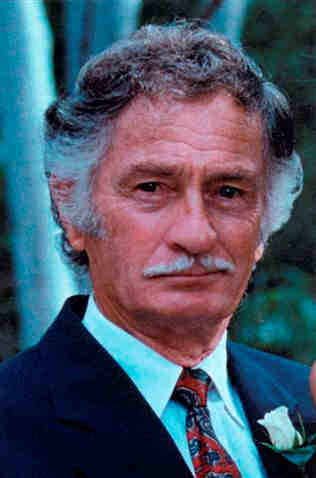
Keith Flexmore Adams was an Australian filmmaker and adventurer.

The Daintree River is a river that rises in the Daintree Rainforest near Cape Tribulation in Far North Queensland, Australia. The river is located about 100 kilometres (62 mi) northwest of Cairns in the UNESCO World Heritage–listed Wet Tropics of Queensland. The area is now primarily a tourist attraction.

Bush tucker, also called bush food, is any food native to Australia and historically eaten by Indigenous Australians, the Aboriginal and Torres Strait Islander peoples, but it can also describe any native flora, fauna, or funga used for culinary or medicinal purposes, regardless of the continent or culture. Animal native foods include kangaroo, emu, witchetty grubs and crocodile, and plant foods include fruits such as quandong, kutjera, spices such as lemon myrtle and vegetables such as warrigal greens and various native yams.
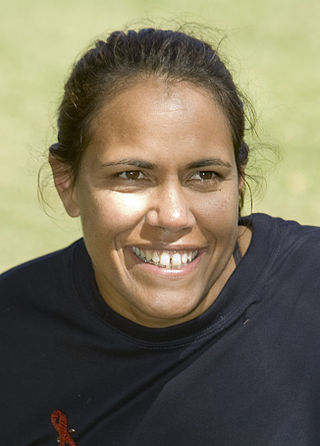
The Kuku Yalanji, also known as Gugu-Yalanji, Kuku Yalandji or Kokojelandji, are an Aboriginal Australian people originating from the rainforest regions of Far North Queensland.
Clifford Brodie Frith is an Australian ornithologist and wildlife photographer. He and his wife Dawn Whyatt Frith have studied and published on Australian birds for many years, and publish books as Frith & Frith.

Ion Llewellyn Idriess was a prolific and influential Australian author. He wrote more than 50 books over 43 years between 1927 and 1969 – an average of one book every 10 months, and twice published three books in one year. His first book was Madman's Island, published in 1927 at the age of 38, and his last was written at the age of 79. Called Challenge of the North, it told of Idriess's ideas for developing the north of Australia.
Malcolm Douglas was an Australian wildlife documentary film maker, and crocodile hunter. Douglas started in the 1960s as a professional crocodile hunter and farmer, but later dedicated himself to their preservation.

An Indigenous Protected Area (IPA) is a class of protected area used in Australia; each is formed by voluntary agreement with Indigenous Australians, and declared by Aboriginal Australians and Torres Strait Islander representative organisations. Each is formally recognised by the Australian Government as being part of its National Reserve System. The areas may comprise land and sea, and are managed by Indigenous groups for the conservation of biodiversity. Managing IPAs also helps to protect the cultural values of their country for future generations, and has benefits for Indigenous health, education, economic and social cohesion.
The Concordia was a Dutch sailing ship of the Dutch East India Company that left Batavia on 15 January 1708 with two other vessels, Zuiderburg and Mercurius. Concordia had 130 people on board and was bound for the Cape of Good Hope and then the Netherlands. She was last sighted by Mercurius in open seas to the south of the Sunda Strait on 5 February 1708, in bad weather.

Ray Mears' World of Survival is a survival television series hosted by Ray Mears. The series airs on the BBC in United Kingdom, it is also shown on Discovery Channel in the United States, Canada, India, Italy, Brazil, New Zealand, Australia, Norway, Sweden, The Netherlands and Russia. The show was first broadcast in 1997 with "The Arctic", and ended in 1998. It would be followed by Extreme Survival.
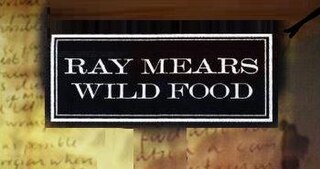
Wild Food Documentary is a documentary television series hosted by Ray Mears. The series airs on the BBC in United Kingdom, it is also shown on Discovery Channel in the United States, Canada, India, Italy, Brazil, New Zealand, Australia, Norway, Sweden, The Netherlands and Russia. The show was first broadcast with an episode set in Australia and ended with "Woodland". The theme tune is not unlike the one heard in World of Survival.

Ray Mears Goes Walkabout is a survival television series hosted by Ray Mears, showing Mears in Australia. The series aired from 2008 on the BBC in United Kingdom, and was also shown on Discovery Channel in Canada, India, Italy, Brazil, New Zealand, Australia, Norway, Sweden, the Netherlands, Russia, and the United States. The broadcast version uses an updated Australian-themed take on the opening theme music to Ray Mears' World of Survival.
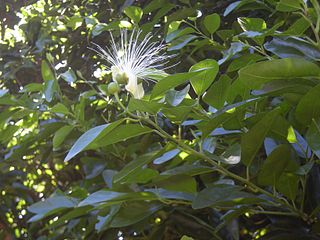
Capparis arborea is a bush or small tree occurring in eastern Australia. The habitat is rainforest; usually riverine, littoral or the drier rainforests. Distributed from the Hunter River, New South Wales to Cape Melville in tropical Queensland. Common names include native pomegranate, wild lime, wild lemon and brush caper berry.
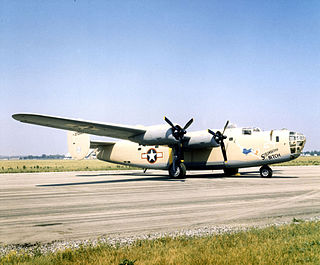
"Little Eva" was a USAAF Consolidated B-24 Liberator which crashed north-west of Burketown, Queensland on 2 December 1942. The aircraft was returning from a bombing mission when its crew became lost. As the fuel supply approached exhaustion some of the crew took to their parachutes. The survivors, now in two groups, set out on foot. Two of the crew travelled east and came across people after twelve days. The other party travelled west, with the only surviving member being found some five months later.

The Long Range Patrol Vehicle (LRPV) is a 6x6 patrol vehicle that was used by the Australian Special Air Service Regiment (SASR) in Afghanistan and Iraq.

Ricky Megee is an Australian, most notable for having been stranded in the Outback and surviving for 71 days in 2006. Megee later gave contradictory statements as to how he came to be stranded crossing the Northern Territory and Western Australia. On one occasion he said that his car broke down, and on another that he had been carjacked by an armed gang. However, a doctor later confirmed that Megee's appearance was consistent with having lived in extreme conditions. Like most deserts, the Tanami can reach 40 °C (104 °F) during the day but still be very cold at night. Megee made his own primitive shelters and survived by drinking rainwater and eating small animals and available vegetation for nourishment. He was eventually discovered by a group of station hands near Katherine, Northern Territory, and taken to Darwin for medical assistance. Although some doubts were later raised as to the exact chain of events as Megee related them, the police did not find evidence that a criminal offence had occurred.
References
- ↑ "Bush Tucker Man – The worlds richest known source of Vitamin C". YouTube . Retrieved 20 April 2019.
- ↑ Brand JC, Cherikoff V, Lee A, McDonnell J (1982). "Nutrients in important bushfoods" (PDF). Proceedings of the Nutritional Society of Australia. 7: 50–54.
- ↑ "Bush Tucker Man: The Vehicles!". remlr.com. Retrieved 22 July 2022.
- ↑ "Vietnam vets win bush retreat access". ABC News. 14 December 2005. Retrieved 20 April 2019.
- ↑ "Australian Honours Search Facility". Office of the Prime Minister and Cabinet, Australian Government. Retrieved 20 April 2019.
- ↑ James Cook University Media Release, "Dr Bush Tucker Man", 27 March 2008 Archived 20 July 2008 at the Wayback Machine Accessed 22 January 2009